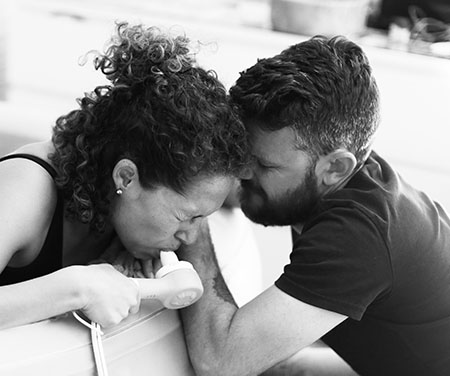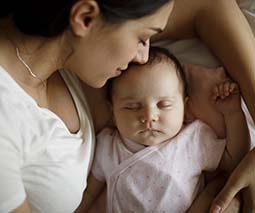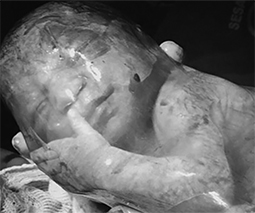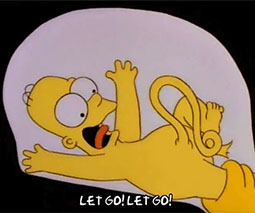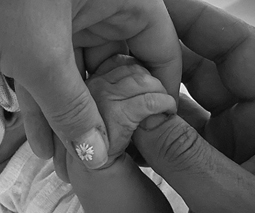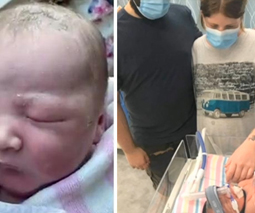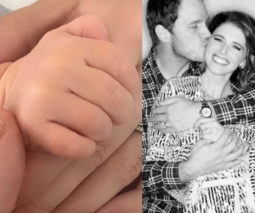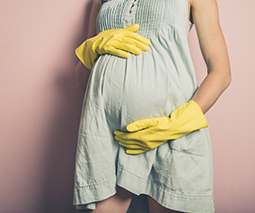“I wanted to prove I could do it”: Having a VBAC after two caesareans
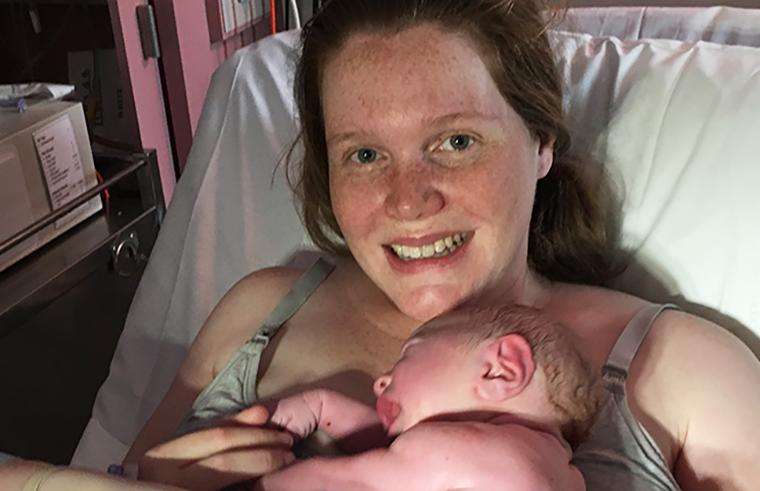
Alicia had had two caesareans, but with her third baby, she was determined to have the natural birth she’d always planned for. It took a midwife advocating for her every step of the way to convince doctors that the mum-of-three could have her VBAC.
Here she shares her story …
“I was pretty disappointed no one realised she was breech”
With my first baby, I laboured for eight hours, I was fully dilated, and then it all stopped: for two hours, I made no progress.
Meconium in my waters told doctors there was something wrong, and when they did an exam, they realised Abi was presenting bottom first. She was breech.
I was told I’d have to have an emergency caesar. I hadn’t prepared for that possibility at all and I didn’t know what to expect. During my pregnancy, everyone told me she was doing well, head down, and I was so disappointed no one picked up on the fact that she was breech.
Abi was born healthy, but I was shocked at how awful the recovery was.
A second unwanted caesar with an easier recovery
We were more prepared when I was pregnant with Liam. They picked up he was breech from 20 weeks.
I tried acupuncture, spinning babies techniques, but he wouldn’t turn. He measured big the whole pregnancy and was 4.53 kilograms when he was born, so it’s possible he didn’t have room to turn. The doctors wouldn’t try to turn him manually because they were worried about my old caesar scar.
This time, we agreed that I’d have a scheduled caesar. I wasn’t happy about it, but I had no other option.
I delivered at 39 weeks and four days. Compared with the first surgery, the experience was much different. It was calmer, I got to have skin-to-skin contact straight away and I kept him with me the whole time.
Because I hadn’t been labouring, the recovery was better too. It was still hard trying to look after a two-year-old and a newborn, but I didn’t have as much pain and recovered more quickly.
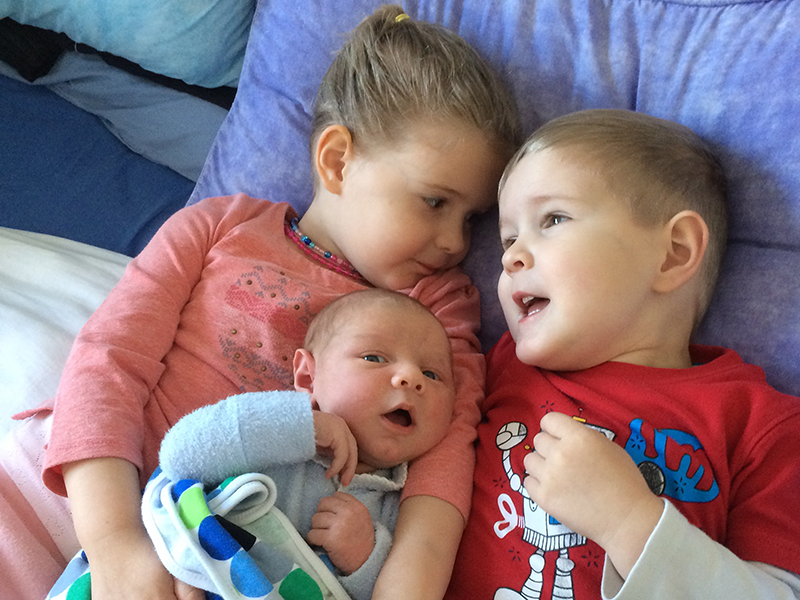
The VBAC doctors advised against
When I got pregnant with Callum, I wanted a vaginal birth so badly. I hated the caesar recovery and I didn’t want to go through major surgery while looking after three kids. Some people recover really well – they’re up and walking the next day. I’m not one of those people.
At 17 weeks I started seeing a chiropractor to sort out my pelvis and give Callum a chance to get positioned head down. The chiro said my pelvis was rotated and tilted which might have caused my other two babies to be breech. She made some adjustments and it seemed to work: Callum presented head down. I decided I would aim for a VBAC.
While I had the support of my good friend Deborah, a midwife who came to my appointments with me, and who was there for my labour, doctors were adamant that I should have a caesar scheduled at 37 weeks. Their worries about risks were compounded by the fact that I had gestational diabetes.
I don’t know how frequent it is to have a VBAC after two caesars, but I do know doctors are scared to attempt it. The main risk is that you have a uterine rupture, which is when the uterus opens up along the scar.
I get that they have to cover themselves and that they’re trying to get the best outcome, but I thought they were making a mountain out of a molehill. Deborah advised me that a VBAC would be safe, and I trusted her completely.
“I can’t believe I did it! I can’t believe I did it!”
The only way to get doctors to agree for me to try the VBAC was if I agreed to have an induction at 40 weeks plus four days. With the gestational diabetes, they were worried about the baby. If the induction didn’t work, I’d have a caesar at 40 weeks plus five days.
The morning before the scheduled induction, I woke with strong period pain. It’d been five years since I’d been in labour, so I wasn’t sure this was it. I tried to ignore it and sleep, but the pain persisted. This was definitely labour.
Once I arrived at the hospital everything intensified. They did an exam; I was already seven centimetres dilated.
The doctors were worried about the risk of rupture, so they put a monitor on me. It wouldn’t stay in place, so Deborah ended up holding it in place the whole time. I started to really struggle through the contractions and tried some gas, but the mouthpiece interfered with the vocalisations I had to make, so I put it aside and asked for morphine.
Deborah said, “We need to do a check before we give you morphine to make sure you’re not too far gone.”
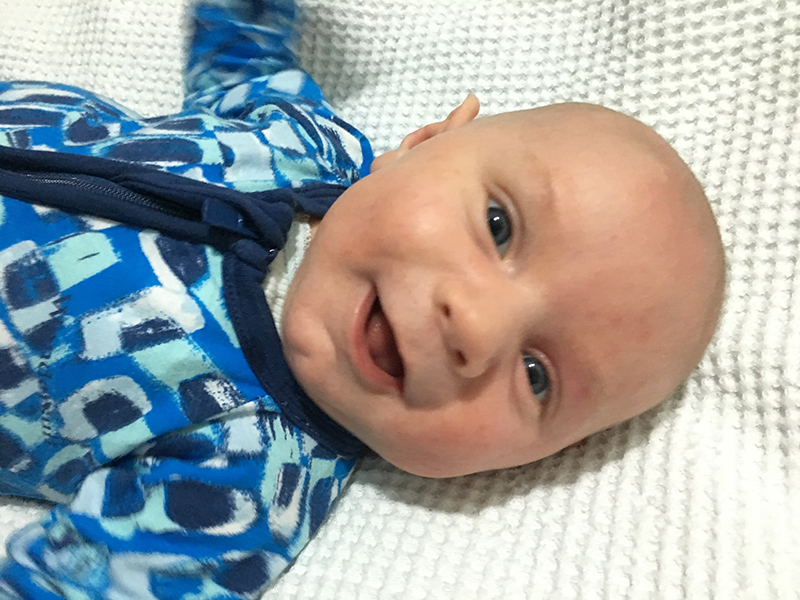
Before I could answer another contraction came and I was pushing.
“Are you pushing?” Deb asked.
I told her yes.
She said it’s too early to push, and I answered, “I have to!”
I was standing, clinging to my husband on one side, Deb on the other, and pushing was out of my control. Callum’s heart rate was dropping down from 150 to 80 and not coming back.
They started getting worried.
They asked if they could break my waters and put a scalp monitor on him and as I climbed on the bed, my waters broke. They went to put a monitor on his head, but they said, “Never mind, the baby is right here. Just push him out.”
I couldn’t tell what I was doing, I only knew it stung like crazy. I didn’t think I’d achieved anything, but actually his head had been born. The doctors told me they really needed to get him out, but there was a big break between contractions.
Then I felt him turn inside me with a great big kick. I yelled out, pushed one last time and out came his shoulder. A moment later, Callum was born at 7.33am after a 3 hour labour. He was 3.93 kg and 52cm long.
Besides a small tear, everything was fine. They put him straight on my chest.
I kept repeating, “I can’t believe I did it! I can’t believe I did it!”
